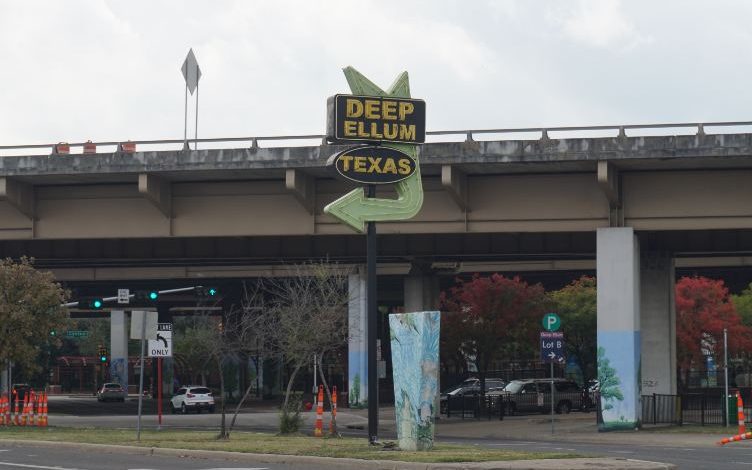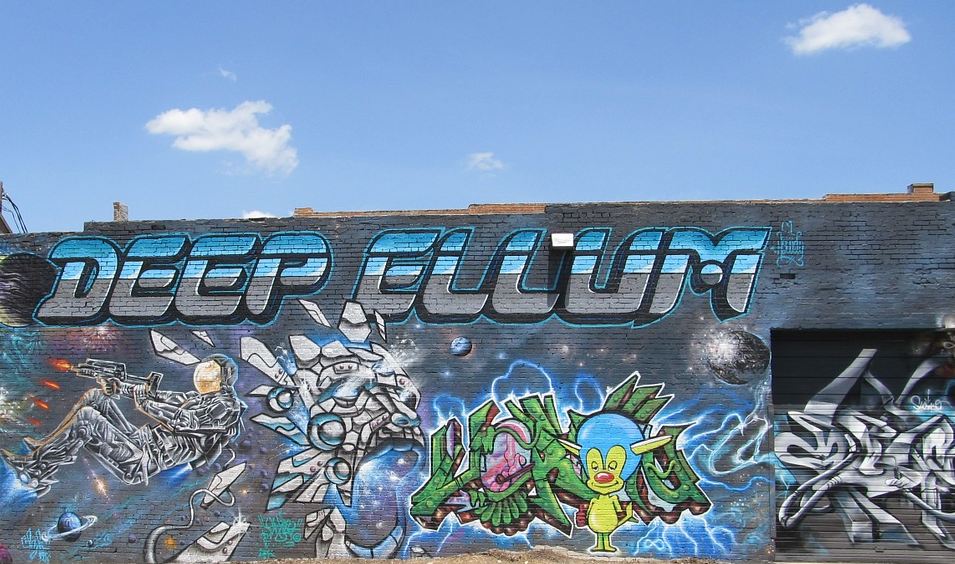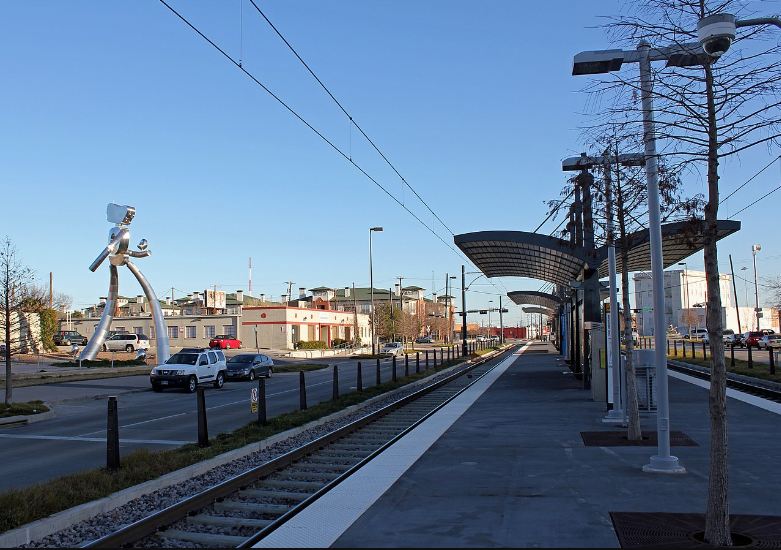Deep Ellum is a neighborhood in Texas that lies about a mile from downtown in East Dallas. It’s directly east of the US 75 freeway and extends to Exposition Avenue, connected to the downtown by Pacific, Elm, Main, Commerce, and Canton Streets. Its name is based on a corruption of the area’s main road, Elm Street. Older alternative names include Deep Elm and Deep Elem. Home to several music and entertainment centers, this bustling section of the city has a rich history and a unique identity of its own.
History of Deep Ellum
After gaining independence from the Mexican-American War, Texas became part of the United States in 1845. Four years after, Dallas was founded after the Civil War. Due to the slave liberation in Texas in the 1850s, many slaves from the state and from nearby states built their houses and farmed in lands in the future Deep Ellum.
Established in 1873, Deep Ellum was one of the city’s first commercial neighborhood to welcome African Americans and European immigrants. The area was initially named Deep Elm, but the pronunciation “Deep Ellum” by its early residents stuck, making it the official name. Due to its proximity to the Texas Central railroad and Houston, the place was also referred to as the “Central Track.”
There were already 500 African-American residents in Deep Ellum when the first train came into Dallas in 1872. Throughout the 1870s, the railroad provided various opportunities for the residents, helping the area thrive as a cultural and residential center for African-Americans. In the 1890s, there were even some theaters and entertainment areas constructed in the neighborhoods.
In 1912, the concept of highways first entered America’s consciousness. Highways are being designed rapidly at the time. But in the early 1940s, the railway in Deep Ellum was torn out with strong reproach by the residents, causing some problems for them. The highway negatively influenced the neighborhood and became a big reason for the low quality of life for black people. It may have boosted business in the area, but it did not last too long.
The Central Expressway was completed in 1949, departing from Elm town to downtown Dallas. The construction of the highway decreased the African-American population in the area. After two decades, most blocks from Deep Elm were removed after city planning. In 1968, as the freeway construction started, the majority of residents were asked to move to other places.
In the late 1990s, Deep Ellum experienced gentrification. Affluent white people replaced the black community due to increasing property values, driving homeowners out of Deep Ellum into less expensive housing in a different area.
Meanwhile, the African-American artists tried to save the neighborhood as a historic district, and their effort worked, though much of the cultural and historical meaning changed over time. The census from the 1970s to 2000s shows how African-American communities were diminished in Deep Ellum.
Industrial Development
In 1888, Robert S. Munger built his first cotton gin factory, the Continental Gin Company, along Elm Street and Trunk Avenue, expanding to other buildings until the 1910s. The business became the largest manufacturer of cotton-processing equipment in the US. Eventually, operations stopped, and it became a Dallas Landmark District. It was then converted to loft apartments in 1997.
In 1914, another industrial giant came to Deep Ellum – Henry Ford. The area was selected as an automobile plant, which became the assembly plant for Ford’s famed Model T. It remained there until the mid-1930s. In 1997, this Dallas Landmark was also converted to loft apartments.
The Union Bankers Trust Building was also constructed Elm Street in 1916 as the Grand Temple of the Knights of Pythias. It was designed by the first African-American architect in the state, William Sydney Pittman.
Deep Ellum’s Claim to Fame
It wasn’t the highways nor the buildings that shaped Deep Ellum into what it is. The area’s claim to fame has always been its music. In the 1920s, the neighborhood started to become a destination for music, especially early jazz and the blues. From the 1920s to 1950, the number of nightclubs, cafes, and domino parlors increased from 12 to 20. Today, Deep Ellum is home to more than 30 live music scenes, making it one of the state’s largest entertainment districts.
After World War II, Houston and Texas Central railroad tracks are removed to make way for the Central Expressway. By 1956, the streetcar line was removed. Businesses were closed, residents moved to the suburbs, and the music stopped.
However, the music scene in Deep Ellum was reignited in the 1980s, thanks to the Dallas punk scene. It helped launch local bands like the Old 97s, the New Bohemians, and Tripping Daisy. In 1990, the music venue Trees opened in Deep Ellum, attracting artists and fans from all over the world.
Places to Go in Deep Ellum, Texas
The boom of music venues, nightclubs, bars, residential lofts, restaurants, breweries, and tattoo parlors made Deep Ellum the perfect home for music, nightlife, and booze. In here, you can find an eclectic mix of food and entertainment, and here are some hotspots that are a must-visit:
The Bomb Factory
It’s a state-of-the-art music venue and event space located in the heart of Deep Ellum. During its initial opening during the ’90s, it housed legendary bands such as Radiohead, Sonic Youth, The Ramones, PHISH, Dave Matthews Band, Nine Inch Nails, and more.
Adair’s Saloon
One of the oldest watering holes in Dallas, Adair’s Saloon is a true dive bar that holds live music every night. It also offers bar bites and down-to-earth digs.
Lula B’s Antique Mall – Vintage lovers will have a blast shopping the stalls of Lula B’s Antique Mall. This shop contains one-of-a-kind treasures, eclectic antique furniture, vintage home décor, and old collectibles.
Anvil Pub
If you’re looking for a great place to receive sustenance and booziness of a Sunday brunch, the Anvil Pub is the best place to go. This Irish biker tavern offers a classic brunch menu with a twist. Try their best-selling Bloody Mary, topped with traditional celery and olive garnish, but served with piles of meats, cheeses, and a slider.
Cane Rosso
Cane Rosso is one of the few certified, authentic pizzerias not just in Texas but in the United States.
Dallas Comedy House – Laugh out loud at the Dallas Comedy House: a fun addition to the Deep Ellum entertainment scene. It offers live comedy shows, stand-up routines, and open mic night. It’s also a premier training center for comedy with wide-range courses for comedians of all experience.
Trees
If you’re into indie rock and roll, try to visit a show at Trees. This is a longtime nightclub known as the most famous concert venue in Deep Ellum. It opened in 1990, and it since became the ultimate venue for live acts and concert goers to dance and connect with bands.
Truth and Alibi
At first glance, this club looks like an old-fashioned candy store, but when you enter with a secret password, you are transported to a beautiful lounge with prohibition-style art. It’s a hidden bar and club gem where you can dance to some of the best DJs in Dallas.




